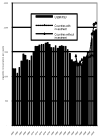A review of the impacts of tobacco industry privatisation: Implications for policy
- PMID: 21790502
- PMCID: PMC3225958
- DOI: 10.1080/17441692.2011.595727
A review of the impacts of tobacco industry privatisation: Implications for policy
Abstract
State-owned tobacco companies, which still account for 40% of global cigarette production, face continued pressure from, among others, the International Monetary Fund (IMF), to be privatised. This review of available literature on tobacco industry privatisation suggests that any economic benefits of privatisation may be lower than supposed, because private owners avoid competitive tenders (thus underpaying for assets), negotiate lengthy tax holidays and are complicit in the smuggling of cigarettes to avoid import and excise duties. It outlines how privatisation leads to increased marketing, more effective distribution and lower prices, creating additional demand for cigarettes among new and existing smokers, leading to increased cigarette consumption, higher smoking prevalence and lower age of smoking initiation. Privatisation also weakens tobacco control because private owners, in their drive for profits, lobby aggressively against effective policies and ignore or overturn existing policies. This evidence suggests that further tobacco industry privatisation is likely to increase smoking and that instead of transferring assets from state to private ownership, alternative models of supply should be explored.
Figures



References
-
- Attwood A. BAT wins auction for Turkey’s state tobacco firm with $1.72bn bid. The Independent 2008
-
- Bachinger E. DrPH Thesis. University of London; 2004. Concensus or complacency: The failure of tobacco control in Austria.
-
- Bilir E, Çakır B, Daglı E, Ergüder T, Önder Z. Tobacco control in Turkey. Copenhagen: WHO; 2009. Available from: http://www.euro.who.int/__data/assets/pdf_file/0004/98446/E93038.pdf.
Publication types
MeSH terms
Grants and funding
LinkOut - more resources
Full Text Sources
